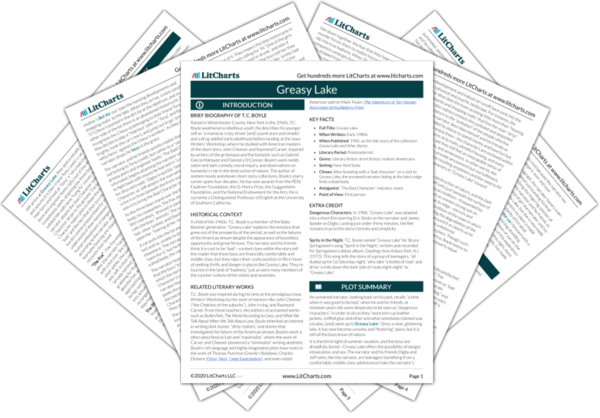The narrator, Jeff, and Digby are obsessed with cars and the freedom and danger they represent, but the narrator is stuck driving his mother’s (presumably clunky) Chevrolet Bel Air station wagon while the people the boys encounter at Greasy Lake drive much cooler cars. T.C. Boyle describes each car that appears in the story with meticulous specificity and glittering prose, asking the readers to pay attention to the vehicle’s characteristics, since the cars speak volumes about the characters associated with them. The narrator, as mentioned, drives his mother’s lame station wagon; the Bad Character drives an older, cooler ’57 Chevy that is “metallic blue” and in “mint” condition; the Blond Men, true bad characters themselves, drive a Trans Am, which is a sleeker, “badder” car; the two women who approach the boys at the end of the story drive a flashy silver Mustang “with flame decals.” The narrator’s mother’s car, then, reflects his youth and naiveté, and suggests that even though he affects the demeanor of someone who is bad and cool, his integrity is still intact. The other people at Greasy Lake, however, drive cars that show their corruption and moral decay. When the Bad Character and the two men in the Trans Am destroy the narrator’s mother’s Bel Air in retribution for the boys’ attack on The Fox, the act can be seen as a metaphor for the destruction of the boys’ naiveté. They thought that driving fast and looking “bad” were symbols of freedom; the reality, though, is that their cushy lifestyles and innocence were the true freedoms, and the reality of danger and decadence is not one they can handle.
Cars Quotes in Greasy Lake
It was early June, the third night of summer vacation. The first two nights we’d been out [driving around] till dawn, looking for something we never found.










